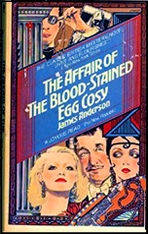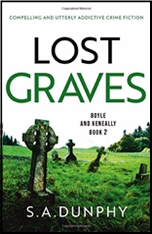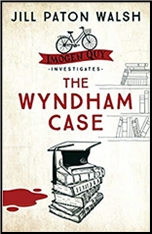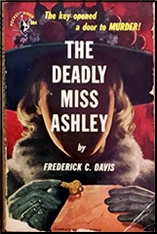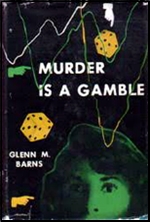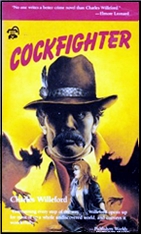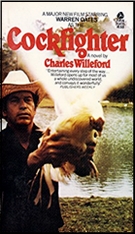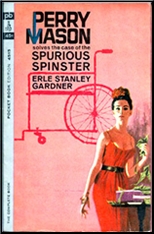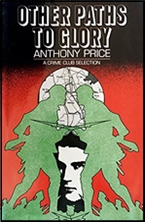REVIEWED BY DAVID VINEYARD:
BASIL COPPER – The Curse of the Fleers. Harwood-Smart, UK, hardcover, 1976. St. Martin’s, US, hardcover, 1977. PS Publishing, UK, hardcover, 2012 (restoring the text of the author’s original manuscript).
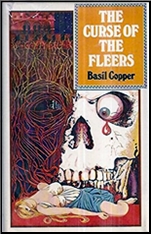
A well done Gothic melodrama for the season.
Though Daphne Du Maurier’s Rebecca was as unblushing a gothic tale as was ever written, replete with the Rochester like Maxim de Winter and the faintest blush of the supernatural in the person of the title character and her mad housekeeper, the result of that novel and films success was that the Gothic novel took a tack into largely the women’s market, in books written almost exclusively by women and for women.
Defined as a woman gets house genre, the model followed Du Maurier and Bronte’s Jane Eyre slavishly. A woman, always young and somewhat inexperienced, usually a governess, comes to a strange household usually finding an eccentric family haunted by the past, an attractive but distant, cold, and cruel male and a more charming, but not always trustworthy type.
Not every book in the genre followed that model exactly, and I am not in the least condemning those that did. Mary Stewart. Norah Lofts, Phyllis Whitney, Dorothy Eden, Victoria Holt, and others working in the genre are some of the best writers of their era, but the true Gothic spirit got a bit lost in the mix.
Oh, there were books that did fit the original definition, Dorothy MacArdle’s The Univited, Francis Beeding’s The House of Doctor Edwards, Jesse Douglas Keruish’s The Undying Monster, Russell Kirk’s The Old Dark House of Fear, William Sloane’s Edge of Running Water and To Walk Alone, Tom Tryon’s Harvest Home, and Shirley Jackson’s The Haunting of Hill House fit the “Gothick†tradition like a glove. And so did Basil Copper’s The Curse of the Fleers, and it might have been recognized as such if it hadn’t been butchered by its first publisher to the point the author turned his back on it.
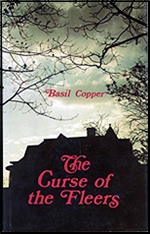
Now a restored edition brings the book back into its full Gothic glory replete with Copper’s extensive notes on writing the book appended to the ending.
Captain Guy Hammond is a forty something veteran of the wars in Afghanistan facing the end of his military career as he recovers from a leg wound in London.
It was early October and the golden splendour of the day was giving way to a dry and misty evening. The clamour of London rose, agreeably distant, to the upper storeys of the small hotel; the grating of the hansom cabs; the rattle of heavier vehicles such as drays; and the distinctive thunder of laden horses-buses passing on the busy thoroughfare’’’
Hammond, a bit like Dr. Watson, is a man with little family and no direction in life until he gets an urgent letter from former Lt. Cedric Fleer begging him to come to their estate Fleer in Dorset. “I cannot go into details but, for friendship’s sake. I should be grateful for your help and advice. This business becomes blacker with every passing day and I fear for my father’s sanity.â€
“There’s an ancient curse attached to my family,†Cedric Fleer tells Hammond. “Something about a Creeping Man…â€
What red blooded Victorian male could resist that? But as Hammond gets closer to Fleer a sense of foreboding overtakes him. And with good reason. Beneath its battlements, Fleer is a vast uninviting place, however welcoming Sir John, Cedric’s father, and his attractive younger sister Prudence, and beautiful Claire Anstey. The countryside is cold and damp and the nearest neighbor Sir Jeffrey Darnley sullen and threatening.
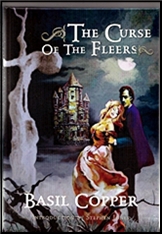
Basil Copper was a popular British writer who made his mark in the latter day Lovecraftian movement and followed August Derelith in writing the popular Solar Pons stories. His novels include the Lovecraftian The Great White Space, the Victorian Gothic detective story Necroscope, and the horror novel House of the Wolf. In addition he had some success with his L.A. based private eye series about P.I. Mike Faraday (even though he never visited Los Angeles), and wrote the Lee Falk Phantom paperback original novels for Avon. He was nominated for a Locus Award for best Fantasy novel and his story “Camera Obscura†was adapted for Rod Serling’s Night Gallery.
One flaw built into the Gothic is that with all the build up too often the payoff is a disappointment. All that portent and heavy breathing, those sideways looks, the sudden breeze and cold, the faint noise that can’t be explained, shadows, and things barely perceived can add up to nothing much and disappear with a little light and a fresh breeze off the sea in lesser hands, or descend into overdone melodrama and sturm un drang. Many a perfectly good Gothic falls apart as the cobwebs get blown too conveniently away and the reader is left with a resounding, “so what?â€.
John Dickson Carr borrowed the trappings heavily in his detective novels, usually avoiding the pitfalls and often exceeding expectations, while writers like Helen McCloy (Through a Glass Darkly and Mister Splitfoot), Hake Talbot (Rim of the Pit), and William Lindsey Gresham (Nightmare Alley) teased the edges of the genre. Wilson Tucker’s Warlock even managed to work the spy novel into the mix, but the classic gothic take was usually eschewed for something else, the detective story, the horror novel, or science fiction.
Not Copper, and not Fleers. The elements ratchet up nicely without boiling over, the tension gathering, the mystery deepening, and the ending well choreographed replete with logical explanation, a death trap worthy of Dick Tracy, and of course the inevitable treasure of the Fleers. Elements of the detective novel and horror may play at the edges, Hammond does some good detective work, but they are not the main thrust of the tale.
That is pure Gothic. This would be silliness in a fair play detective story. In a true Gothic it is par for the course.
Originality isn’t really what we are looking for in these kinds of entertainment. It’s the comfort of the familiar played out with intelligence and an eye to teasing our expectations while never disappointing them, here with the Creeping Man seen haunting the battlements and a giant gorilla in a private zoo as well as bodies hanging strangled in closets as Hammond investigates and begins to uncover very real motives for murder and the methods of committing them it all builds to what Copper himself called a Grand Guignol finale.
Hammond felt a tension rising within him. A certainty that had been growing all day. There was a muffled grunt from Cobbett and a hissing cry from Fleer as the face came into view. The Inspector fumbled with the crumpled visage of wrinkled flesh that Hammond remembered only too well from the Yew Walk. The rubber mask stripped away to reveal the distorted, terror-stricken face of a …man with a ….
Cedric Fleer stumbled back, his face as white as paper. “My God! …â€
And this time the guy gets the house and the girl and a career.
About time too.
